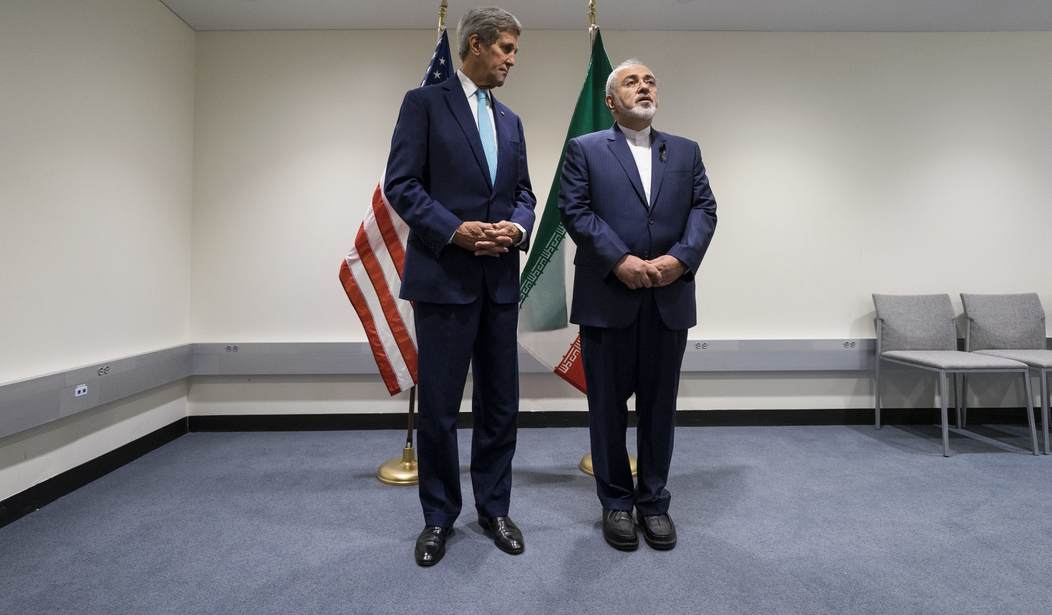WASHINGTON – The Islamic Republic of Iran is “practically” cheating on its nuclear deal in plain sight, a defense advisor told Congress on Thursday, citing evidence from satellite imagery.
“Iran has actually practically told us that they’re cheating on the Iran nuclear deal,” Peter Vincent Pry, executive director for the EMP Task Force on National and Homeland Security, a Congressional Advisory Board, said Thursday at a hearing of the House Homeland Security Subcommittee on Oversight and Management Efficiency. “They have told us in their military doctrine, black-and-white, that they plan to cheat on agreements in order to get nuclear weapons.”
Pry’s comments came the same day that President Trump announced that he will not certify the Iran deal this month, which starts the clock for a 60-day window for Congress to decide whether to reapply sanctions that the Obama administration lifted under the deal.
Iran agreed to the Joint Comprehensive Plan of Action in 2015, with promises to significantly curb operations at the country’s nuclear facilities in return for the lifting of international oil and banking sanctions. Some experts have said that Iran has denied international nuclear inspectors access to military installations.
Pry pointed to unclassified satellite imagery showing an Iranian military base with four high-energy power lines carrying about 750,000 volts each running underground into a facility to which the International Atomic Energy Agency has no access.
Pry suggested that Iran is using those high-voltage lines to power uranium centrifuges that have not been declared to the international community. He compared it to the Soviet Union’s underground nuclear reactor at Krasnoyarsk-26, which was used to clandestinely make plutonium and uranium for nuclear weapons to skirt Cold War arms deals.
“Something is going on in one of those underground military facilities (in Iran),” Pry said. “We have a long history of the bad guys cheating on these treaties, and at least half the problem is our own unwillingness to acknowledge that because there are interests in this town that are very much in favor of not wanting to face the reality that arms control doesn’t work.”
He compared the situation to the people surrounding UK Prime Minister Neville Chamberlain prior to World War II, who didn’t want to acknowledge that the Nazis and the Japanese were cheating on the Washington Naval Treaty.
In his opening remarks, Pry also warned of a separate issue that he has been sounding the alarm about for nearly a decade: North Korea staging an electromagnetic pulse attack that he believes could shut down the U.S. power grid for an “indefinite period leading to the death within a year of up to 90 percent of all Americans.”
As described by Pry, an EMP attack from North Korea would not require an accurate missile guidance system, as the target area could have a radius of hundreds of thousands of kilometers. An EMP attack would be possible, he testified, by launching a short-range missile off a freighter or a submarine. A balloon-lofted warhead detonated at 30 kilometers in altitude, he continued, could “black out” the Eastern Electric Power Grid, which generates about 75 percent of U.S. electricity.
Pry cited claims made in 2016 by Ambassador Henry Cooper, former director of the U.S. Strategic Defense Initiative, who wrote that North Korea “doesn’t need an ICBM to create this existential threat. It could use its demonstrated satellite launcher to carry a nuclear weapon over the South Polar region and detonate it … over the United States to create a high-altitude electromagnetic pulse.”
Pry discussed North Korean weapons developments in just the past six months. Citing the intelligence community, Pry said that North Korea has an estimated 60 nuclear weapons, intercontinental ballistic missiles that can strike Denver and Chicago, hydrogen bombs comparable to American thermonuclear weapons and miniaturized nuclear weapons. But Pry maintains that an EMP attack is the most significant threat.
“After massive intelligence failures grossly underestimating North Korea’s long-range missile capabilities, number of nuclear weapons, warhead miniaturization and proximity to an H-Bomb, the biggest North Korean threat to the U.S. remains unacknowledged: nuclear EMP attack,” he said.









Join the conversation as a VIP Member